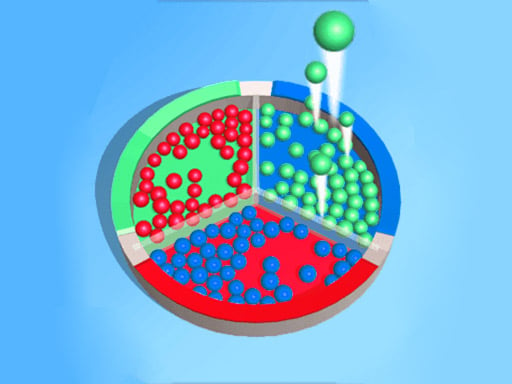
Cars are an essential part of modern transportation, and understanding the mechanics behind their movement offers insight into both engineering and everyday driving. Car movement is influenced by a combination of mechanical, physical, and environmental factors. Here, we’ll explore the fundamental forces and components involved in a car’s movement, from the role of the engine to the impact of friction and aerodynamics.
The Basic Mechanics of Car Movement
1. Engine Power and Propulsion
The heart of a car’s movement is its engine, which converts fuel (like gasoline or electricity) into mechanical power. In a gasoline-powered car, the engine combusts fuel, creating small, controlled explosions that push pistons. These pistons turn a crankshaft, which generates rotary power. In electric cars, the process is simpler; electric motors use energy from batteries to generate motion.
2. Transmission System: Converting Power to Motion
The transmission system in a car takes the rotary power generated by the engine and directs it to the wheels, allowing the car to move forward or backward. The transmission adjusts the engine’s output to provide the right amount of power based on speed and road conditions. This helps in optimizing performance and fuel efficiency.
3. Wheels and Axles
Once the power reaches the wheels, it causes them to rotate, propelling the car forward or backward. The wheels are connected to axles, which turn as power flows through the transmission. The car’s tires, in contact with the ground, create friction that allows the car to grip the road surface, preventing slippage.
The Physics of Car Movement
1. Newton’s Laws of Motion
Car movement follows Newton’s laws of motion:
- First Law (Inertia): A car will remain at rest or in motion unless acted upon by an external force (e.g., pressing the brakes).
- Second Law (F=ma): The force needed to move a car is proportional to its mass and acceleration. A heavier car requires more force to move than a lighter one.
- Third Law (Action and Reaction): When a car’s wheels push against the road, the road pushes back with an equal force, propelling the car forward.
2. Friction: A Key Component of Movement
Friction between the car’s tires and the road surface is crucial for movement. Traction enables the car to accelerate, turn, and brake effectively. Cars are equipped with different types of tires depending on road conditions (e.g., winter, summer, or all-season tires) to maximize traction.
3. Aerodynamics and Drag
As a car moves, it encounters air resistance or drag. The design of a car’s body aims to reduce drag to improve fuel efficiency and handling. Aerodynamic shapes allow cars to move more smoothly through the air, reducing fuel consumption and increasing stability at high speeds.

The Role of Braking and Steering in Movement
1. Braking Systems
Braking is essential for controlling a car’s movement and stopping it safely. Brake systems use hydraulic pressure to press brake pads against discs attached to the wheels, slowing down the car. Anti-lock braking systems (ABS) prevent the wheels from locking, maintaining steering control during emergency stops.
2. Steering Mechanisms
The steering system allows the driver to change the car’s direction by adjusting the angle of the front wheels. In modern cars, power steering systems use hydraulic or electric power to reduce the effort needed to steer, making it easier to control the vehicle’s direction.
Advanced Technologies in Car Movement
1. Cruise Control and Adaptive Cruise Control
Cruise control is a system that maintains a car’s speed without the driver having to press the accelerator constantly. Adaptive cruise control goes further by adjusting the car’s speed based on the distance to the vehicle in front, enhancing safety and convenience.
2. Electric and Hybrid Systems
Electric vehicles (EVs) and hybrid cars use electric motors to move, offering an alternative to traditional combustion engines. These systems are efficient and environmentally friendly, utilizing battery power and regenerative braking to extend driving range and reduce emissions.
3. Autonomous and Self-Driving Technology
Self-driving technology uses sensors, cameras, and AI to control a car’s movement without human intervention. These systems can detect and react to traffic conditions, enhancing safety by reducing human error.

Environmental Factors Affecting Car Movement
1. Road Conditions
The type of road surface—such as asphalt, gravel, or wet pavement—affects tire grip and overall car movement. Slippery roads reduce traction, requiring drivers to adjust speed and handling accordingly.
2. Weather Conditions
Weather plays a critical role in car movement. Rain, snow, and ice can create hazardous conditions, while strong winds can destabilize cars at high speeds. Drivers must consider these factors and adjust their driving habits to maintain control.
3. Slope and Terrain
Driving uphill or downhill impacts a car’s movement. Moving uphill requires more power due to gravity, while driving downhill can cause a car to accelerate naturally, requiring more braking to control speed.
Conclusion: Understanding Car Movement for Safer Driving
Understanding the principles of car movement helps in making informed driving decisions and maintaining vehicle control in different situations. From the mechanics of the engine and transmission to the influence of road conditions and aerodynamics, car movement is a complex yet fascinating topic that combines physics, engineering, and driver awareness. With advancements in automotive technology, driving is becoming safer and more efficient, offering drivers better control and comfort on the road.



Leave a Comment